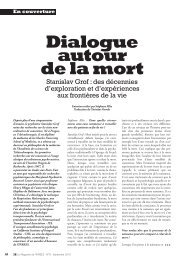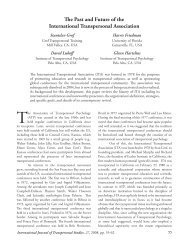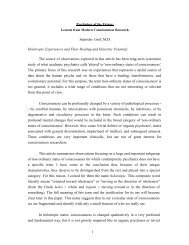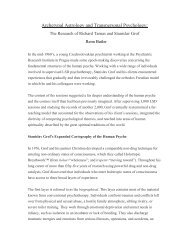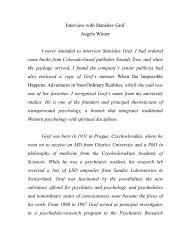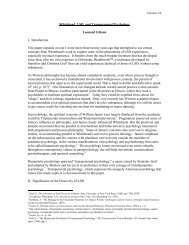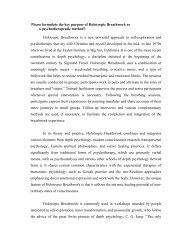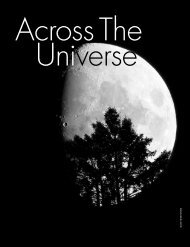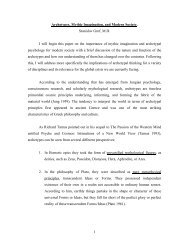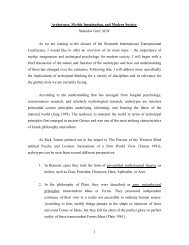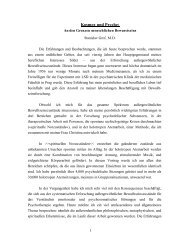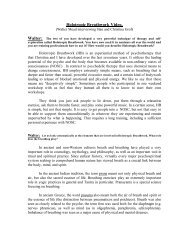1 PSYCHOSIS AND HUMAN SOCIETY: A Historical ... - Stanislav Grof
1 PSYCHOSIS AND HUMAN SOCIETY: A Historical ... - Stanislav Grof
1 PSYCHOSIS AND HUMAN SOCIETY: A Historical ... - Stanislav Grof
You also want an ePaper? Increase the reach of your titles
YUMPU automatically turns print PDFs into web optimized ePapers that Google loves.
The Church responded to this situation by a witch hunt of unprecedented<br />
proportions. In 1487, Pope Innocent VIII. issued a bull that officially accepted the<br />
belief in demons; it referred to men and women practicing witchcraft and causing<br />
sterility, impotence, disease, famine, and murder. Three years later, two Dominican<br />
monks Sprenger and Kramer, sent by the pope to Germany, wrote the book “Malleus<br />
Maleficarum” or "Witches' Hammer" that inseparably linked mental disorders and<br />
witchcraft for the centuries to come. This horrible document became the standard<br />
reference for Church and state alike in regard to the assessment of all unusual experiences<br />
and behaviors, as well as matters concerning the investigation, indictment, trial,<br />
judgment, and punishment of alleged witches.<br />
In the resulting atmosphere of collective metaphysical paranoia, large numbers of<br />
people with various forms of psychopathology and those who had what we would now<br />
call transpersonal experiences or spiritual emergency were accused of witchcraft or<br />
possession by the devil. They were exposed to unimaginable tortures by the Holy<br />
Inquisition that saw such drastic procedures as legitimate means to elicit confessions of<br />
liaison with the devil and to save the souls of witches and satanists from damnation<br />
and the horrors of hell. According to historical estimates, as a result of these trials,<br />
hundreds of thousands and possibly millions of people were killed, tortured to death<br />
during the investigations, hanged, or burned at the stake of the infamous autos-da-fe.<br />
These hideous witch trials continued until the eighteenth century in spite of occasional<br />
attempts of enlightened physicians, such as Paracelsus, Johannes Weyer, and Thomas<br />
Sydenham to replace these practices by medical considerations and procedures.<br />
In comparison with the countless unfortunates who ended up as victims of the<br />
Inquisition, there were a few who found a different fate; their unusual experiences were<br />
seen as being of divine origin and they became sanctified by the Christian Church. St.<br />
Teresa of Avila and St. John of the Cross can be mentioned as examples of this category.<br />
The arbitrary nature and capriciousness of the process that assigned people to the group<br />
of witches or saints can be exemplified by St. Joan of Arc. She was tried in 1431, found<br />
guilty of witchcraft and burnt at the stake, but twenty-five years after her death this<br />
judgment was annulled. Nearly five centuries later, in 1909, Joan was beatified and<br />
in1920 canonized by the Roman Catholic Church.<br />
During the medieval era, the Greek ideas continued to flourish in the Arabian<br />
countries and had a strong influence on their cultural life, resulting in a much more<br />
8




